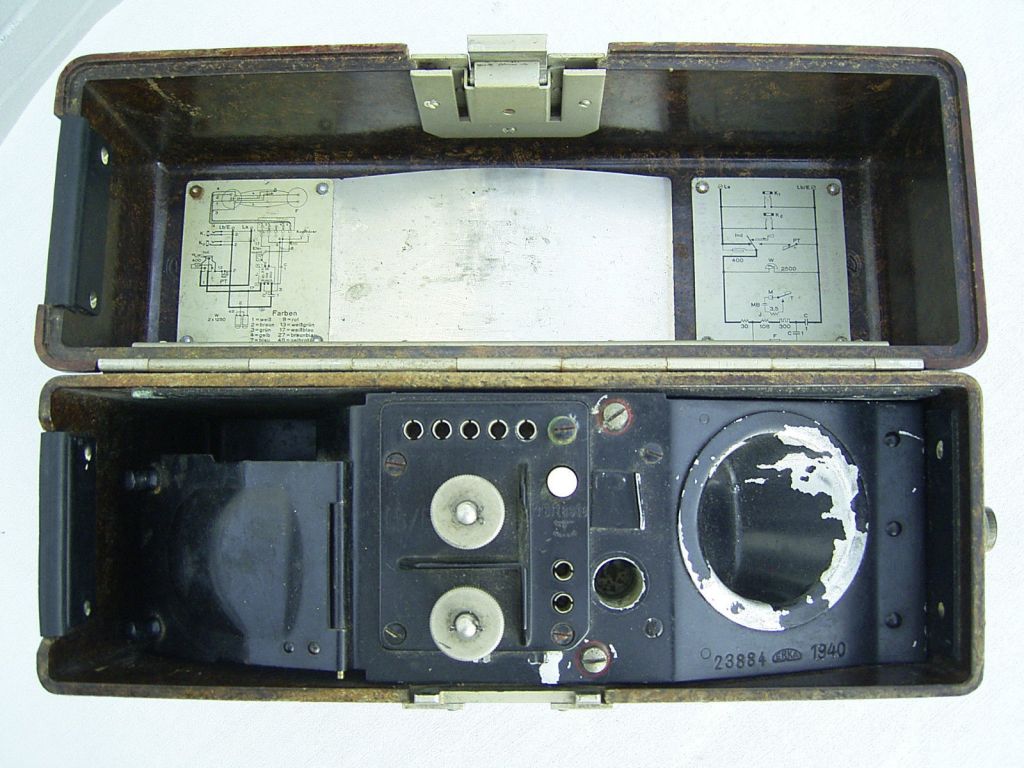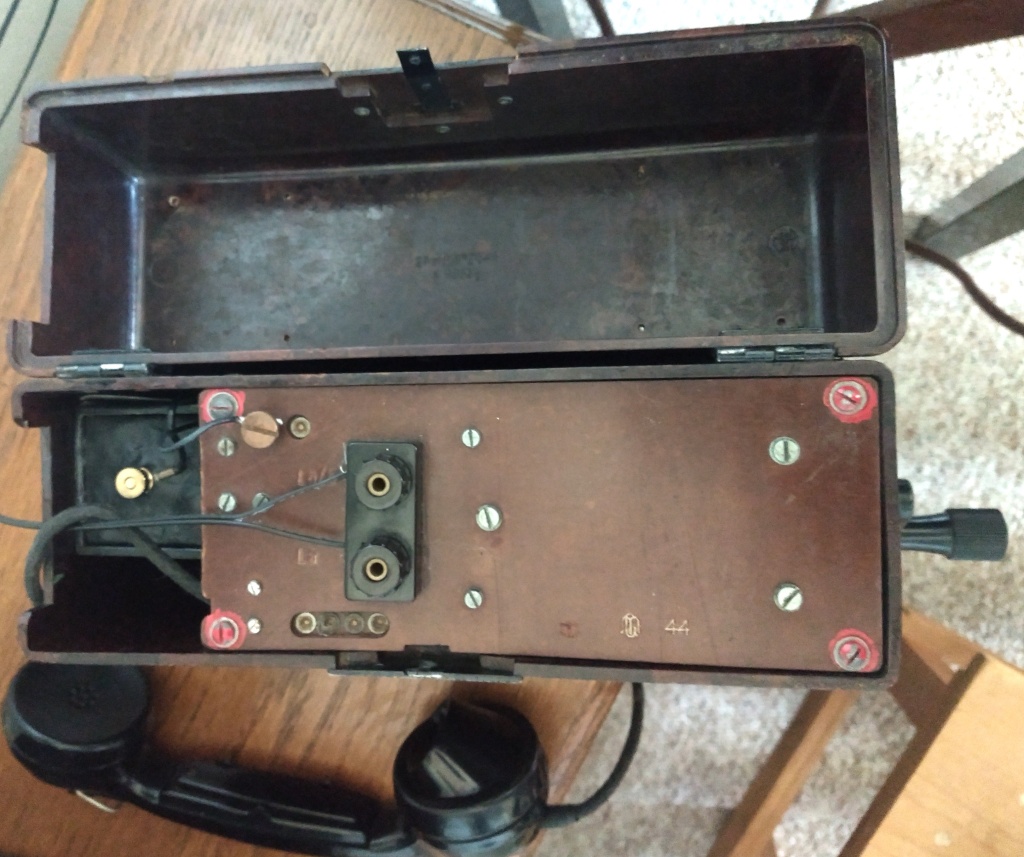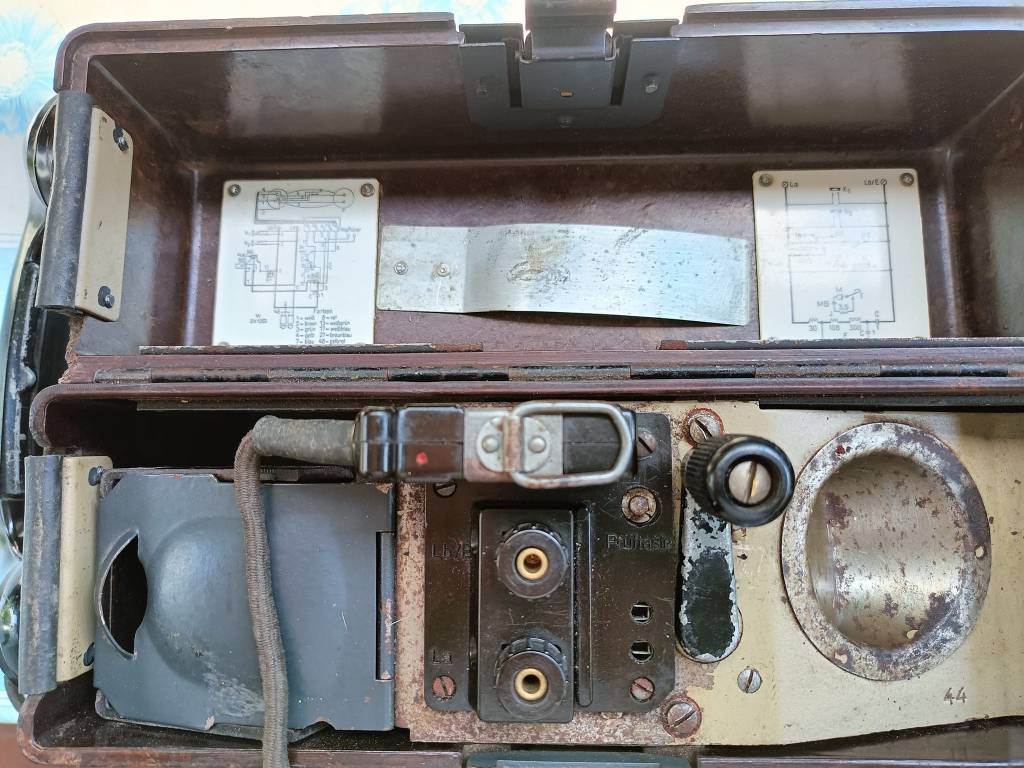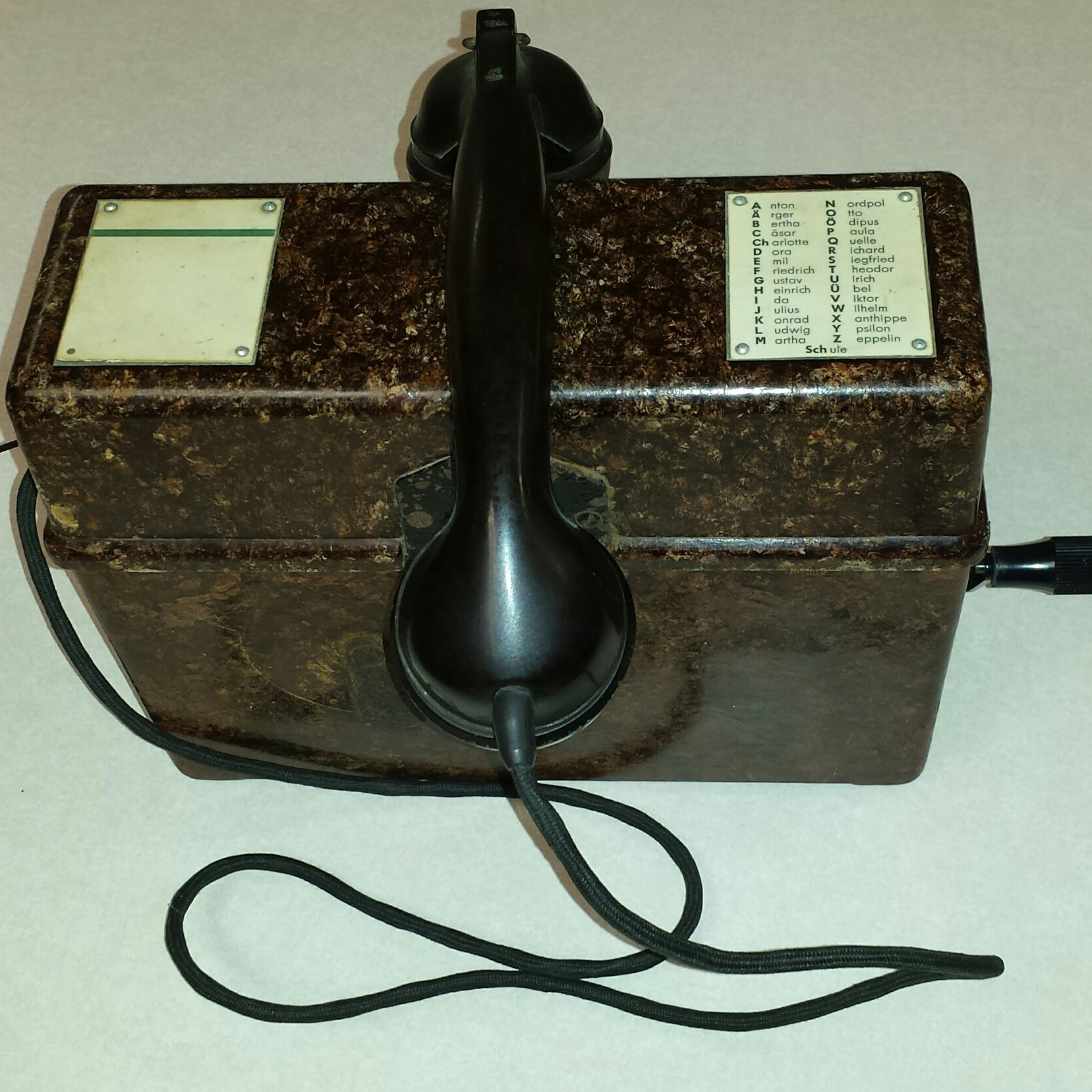During the latter years of WW2, the war was going badly for Germany. There were shortages of fuel and raw materials. Daylight and night time bombing was wreaking havoc on industry. Lastly, the economic impacts of waging war on multiple fronts was staggering.
This created a lot of pressure to make designs simpler and cheaper. This would save on strategic materials, cut production time, and save money. Beginning in 1943, field telephone designs were changed.
From 1933 until 1943, the standard FF33 field telephone remained pretty much unchanged. Around 1940, one obvious change involved the hardware on the Bakelite cabinets. The latch, grilles, and covers were originally nickel plated. These were changed to black painted steel. Another change involved the 5-pin handset plug. This was originally metal, and it was changed to Bakelite. The 3rd pin was omitted completely on some Bakelite plugs.

In 1943, it became apparent that a significant number of FF33 field telephones were being used indoors away from the battlefield. As such, weatherproofing and robust construction was not needed. This led to the design of the OB43.

The OB43 had simplified hardware on the Bakelite cabinet. Some hardware was omitted altogether. There were no rubber weather seals for the handset cord and telephone wires. There was no battery cup and lid. The top was a simple phenolic board. The handset had no plug… It was hardwired into the telephone. Lastly, the metal screw terminals for the telephone wires were cheapened by replacing them with plastic. Each OB43 had a red warning label on the lid that the phone was for indoor use only.
OB43s are very rare and extremely expensive today. This was probably due to limited production and cheap, less robust construction.
The FF33 was still needed on the battlefield, but was cheapened somewhat towards the end of the war. The most notable changes involved simplifying the lids on the battery cups. The lids used a cutout in the stamping instead of small metal knobs. The screw terminals were also changed to plastic. The top was still a metal stamping, but was painted light yellow-brown. So were parts of the cabinet hardware (Francesco Ceresi photo).

For more information about German WW2 field telephone equipment, check out my new book… https://www.lulu.com/en/us/shop/rotwang-manteuffel/world-war-2-german-field-telephone-equipment-a-basic-guide-for-reenactors-and-historians/paperback/product-976w9q.html?page=1&pageSize=4

